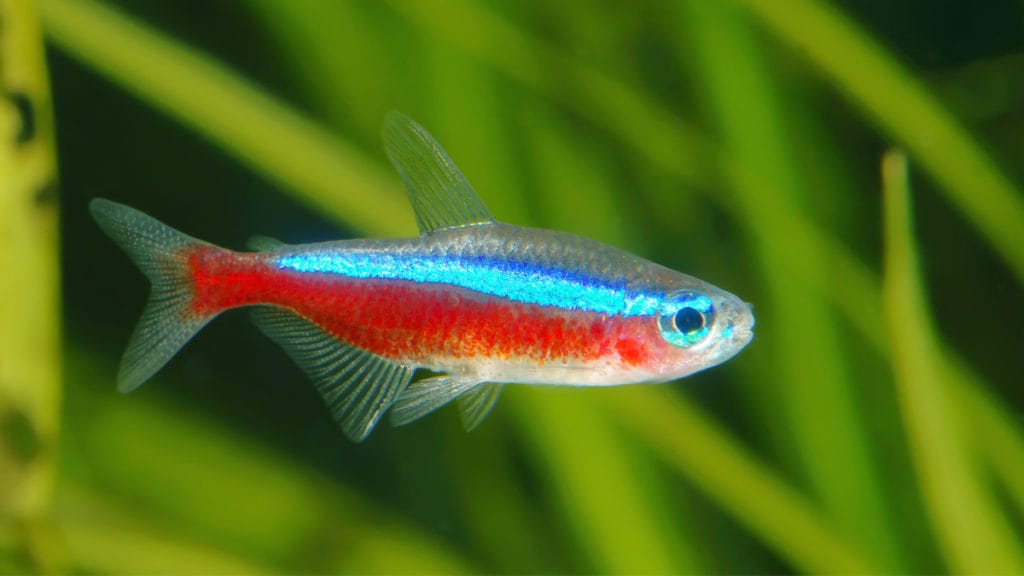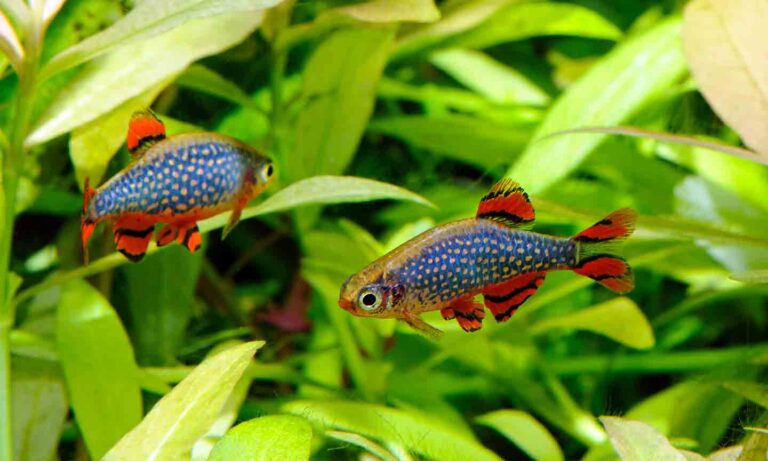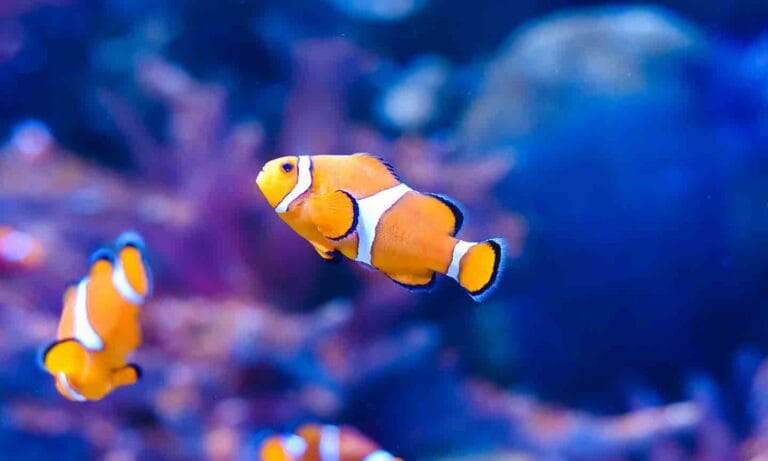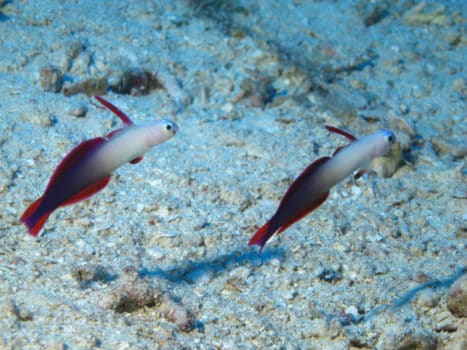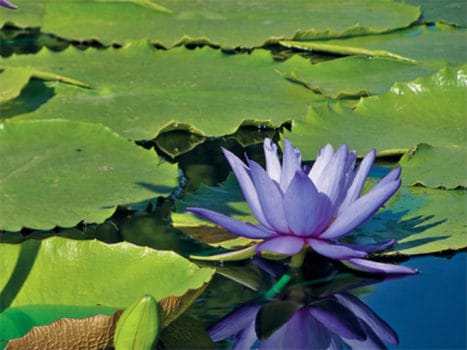Neon tetras are one of the world’s most popular aquarium fish. Fish collector Auguste Rabaut discovered them in 1936 and sent some to a fish breeder in France, who subsequently exported them to aquarists around the world. Within a year, the first neons arrived in the United States — shipped aboard the luxurious zeppelin airship Hindenburg!
In the decades that followed, neons quickly established themselves as classic community fish. Cardinal tetras appeared a couple of decades later, and there aren’t many aquarists who haven’t kept one or the other at some point in their hobby careers.
However, familiarity doesn’t necessarily breed success, and many aquarists continue to find these fish frustratingly difficult to maintain for any length of time. So, we’ll look at what these lovely fish need to succeed and how best to keep them in your community tank.
Neon tetras (Paracheirodon innesi) and cardinal tetras (Paracheirodon axelrodi) are both small, streamlined fish displaying electric blue and blood red longitudinal bands. On neons, the red band only runs half the length of the body, whereas on cardinals, the red band runs from head to tail. Cardinals also tend to be a bit bigger and more robust than neons.
Appropriately enough for such popular aquarium fish, both cardinals and neons have scientific names that honor fishkeepers. The neon tetra (Paracheirodon innesi) is named after William T. Innes, an aquarium writer who did much to establish the hobby in the United States. He was the editor of the country’s first monthly fishkeeping magazine, The Aquarium, and author of Exotic Aquarium Fishes, arguably the first English language encyclopedia of aquarium fish, which is still regarded as a classic text.
Cardinal and Neon Varieties
The green neon tetra (Paracheirodon simulans) is an infrequently seen, but attractive, fish. When Jacques Géry gave this fish its name (originally Hyphessobrycon simulans), he was thinking of the resemblance between his new fish and the neon, so he chose the species name simulans, meaning similar.
Green neons come from the same Orinoco River and Rio Negro basins as cardinal tetras, but they favor clear, bright waters. Most specimens in the trade are wild-caught and should be treated in the same way as cardinals. They need warm, soft, slightly acidic water conditions to do well. Although a bit shy, they look wonderful in well-planted tanks.
Neons and cardinals haven’t been selectively bred as much as fish like guppies, but there are a few artificial varieties in the trade. The most commonly seen is the diamond neon tetra, which has a scattering of shiny blue scales on the head instead of the usual blue band on the flanks. There is also the long-finned neon, which is vulnerable to fin-nippers, so choose tankmates with care.
The gold cardinal tetra is a new form of cardinal with silver rather than metallic blue bands along its flanks. It also has a more yellow body color than normal cardinal tetras. There is also a gold neon tetra available, as well.
The cardinal tetra honors Herbert R. Axelrod, the noted fishkeeping writer and publisher. He was the first person to recognize that the cardinal tetra (at the time called the scarlet tetra) was a new species, so when ichthyologist Leonard P. Schultz described the fish in 1956, he chose the name Cheirodon axelrodi, now Paracheirodon axelrodi. (The genus changed because it was discovered to be more closely related to the neon tetra (Paracheirodon innesi) than was originally assumed.) About the same time, two other ichthyologists, George S. Myers and Stanley H. Weitzman, had also received specimens of the fish and simultaneously published their own description for the fish, naming it Hyphessobrycon cardinalis. In the end, Schultz’s name was accepted as the one with priority, but Myers and Weitzman’s name lives on as the common name for the fish.
Water Chemistry
Neon tetras come from the upper part of the Amazon River system, specifically the streams that feed into the Rio Solimoes area that encompasses parts of Colombia, Peru and northwestern Brazil. The waters here are soft, slightly acidic to neutral in pH and moderate in temperature. Indeed, one of the most common mistakes people make with neons is keeping them in water that’s too warm, shortening their lives considerably.
Cardinal tetras come from the Upper Orinoco River and Rio Negro basins, including parts of Colombia, Brazil and Venezuela. They are found in shallow streams where the water is invariably very soft and often highly acidic. Cardinal tetras particularly favor streams where the water is stained black from the tannins released by decaying vegetation.
In the wild, the streams they live in are soft and acidic. The pH can easily be as low as 4.0, and a hardness of less than 2 dH would not be unusual. Providing such conditions in the aquarium is not necessary because both tetras are fairly adaptable as long as hard, alkaline water is avoided; a pH of 6.0 to 7.0 and 5 to 10 dH suit them very well.
In fact, it’s a good idea to avoid very acidic conditions because biological filter bacteria don’t do well in acidic conditions and may stop working completely if the pH drops much below 6.0. Because of this, the only reliable way to filter an aquarium maintained at pH 4.0 to 5.0 is by using ammonia-removing media, such as zeolite.
Some people have success keeping tank-bred neons and cardinals in water up to pH 8.0, 20 dH. But wild-caught fish don’t seem to do well under such conditions, and they account for most of the cardinals and green neons in the trade as well as some of the neon tetras. Under adverse conditions, these fish are more disease-prone and generally shorter-lived.
If you have a hard-water fish aquarium, it’s much better to go with species that actually do well in such conditions. The lovely yellow and neon blue Celebes rainbowfish (Marosatherina ladigesi), for example, would make a great alternative to neons or cardinals.
If you live in a soft-water area, setting up an aquarium for these tetras won’t be difficult. The only thing you need to watch for is pH stability. All tanks become acidic over time as a result of the various biological processes going on in them. Hard water contains mineral ions (such as carbonate and bicarbonate) that inhibit this acidification, keeping the pH stable. But soft water lacks these ions, and if the tank is overstocked or water changes are too infrequent, the tank can become dangerously acidic very quickly.
To help reduce acidity, commercial pH buffers are widely available. All you do is add the right amount of buffer to each bucket of new water, along with dechlorinator, plant fertilizer and any other additives you are using. If used properly, these will keep the pH at a steady level between water changes. For neons and cardinals, buffers that fix the pH at 6.0 to 7.0 are all perfectly suitable.
If you are in a hard-water area and decide to set up a soft-water aquarium by mixing tap water with deionized water or rainwater, make sure you understand the relationship between acidification and carbonate hardness. All aquaria tend to become more acidic over time because of the way organic materials and fish wastes decay. Once carbonate hardness gets below around 5 degrees KH, under some circumstances pH can drop so quickly your fish and plants can be stressed and even killed. Frequent water changes and the use of a pH buffer will help, but casual aquarists may well find it easier to avoid manipulating water chemistry altogether, and simply allow their fish to adapt to whatever their local water conditions happen to be.
Your neons and cardinals will be much healthier in hard, alkaline water with a stable pH than in an aquarium in which the hardness and pH levels are constantly changing.
In particular, make sure you understand that water softened by a domestic water softener is not actually soft water. Domestic water softeners simply replace the minerals that form limescale with minerals that do not. The resulting chemical cocktail is completely unlike anything your fish experience in the wild and will do them much more harm than good.
The two most popular ways to create soft water suitable for use in an aquarium are to use rainwater or a reverse-osmosis (RO) filter. Collecting rainwater is cheap and easy by using a suitable large container (sometimes referred to as a “water butt”), but you run the risk of collecting airborne pollution, too. Unless you live in a highly polluted area, filtering the rainwater through carbon should make it sufficiently safe to use in an aquarium. De-ionizing and RO filters are expensive to buy and maintain, but they produce very safe water eminently suitable for use in aquariums.
For various reasons, you shouldn’t use rainwater or RO water directly; for example, there is a lack of pH stability. Mix the pure water with some hard water until you get the pH and hardness levels you want. Don’t forget to add buffering salts as well.
In practice, however, you don’t need very soft, acidic water to keep neons and cardinals healthy. Simply mixing your hard tap water with pure water (deionized water, reverse-osmosis water or rainwater) in a 50:50 ratio will create stable, not-too-hard water conditions that your fish will thrive in.
Temperature
Water temperature is an often overlooked aspect of tropical fishkeeping. If fish are kept too warm, their metabolism speeds up, so they need more oxygen. Also, as water gets warmer, it contains less and less oxygen. So at some temperature, you have fish that need more oxygen than is available in the water, and they suffocate.
By contrast, fish that are kept too cold have trouble maintaining their metabolic processes at an adequate level for healthy living. They cannot digest fish food properly, and their immune systems become unable to fight off infections. Depending on how cold the water is, the results vary from poor health and lack of appetite all the way to rapid death.
Neons come from waters that are relatively cool, typically 68 to79 degrees Fahrenheit, with a temperature of 72 to 75 being just about perfect for them. Not all tropical fish will thrive in water this cool. Ram cichlids (Mikrogeophagus ramirezi) and discus (Symphysodon spp.), for example, need to be kept much warmer to stay in good health. But there are a lot of fish that will thrive under these conditions. If you are building a South American community, then Corydoras, Otocinclus and whiptail catfish would all make ideal tankmates.
In contrast, cardinal tetras require much warmer conditions to do well, with 73 to 80 degrees being what they would experience in the wild. These are ideal fish for systems in which the water needs to be quite warm. Gouramis thrive in warm water conditions and can make excellent tankmates for cardinal tetras.
Note that water that is good for neons will be too cold for cardinals, while neons will find the balmy conditions enjoyed by cardinals stressful in the long term. For best results, decide whether you want a cool or warm community aquarium, and then choose which of the two tetras will work best for that tank.
Social Behavior
Here’s where many aquarists go wrong. Neons and cardinals must be kept in big groups. It’s true that this is better aesthetically—half a dozen neons won’t look very impressive, but keep 20 or 30 of them, and you’ll have a visual treat.
However, it’s also a question of animal welfare. These are schooling fish that naturally occur in groups containing hundreds of individuals. When kept in a group that’s far too small, neons and cardinals are prone to shyness, a reliable sign that these fish aren’t doing well. They won’t school properly if there aren’t enough of them; instead they’ll just scatter themselves among the plants. To really see these fish at their best, you need to have them swimming about as one tightly organized, brilliantly colored school.
One rule of thumb is to allow one neon or cardinal tetra per gallon of water. So if you’re setting up a 55-gallon community system, consider getting a school of 55 cardinals. Trust me on this. The resulting school of fish will look spectacular — much better than a mishmash of half a dozen different types of fish.
Diet
Feeding neons and cardinals rarely presents problems. Tank-bred neons will eat just about anything, and will accept flake, freeze-dried and frozen foods, just as readily as they will take small live foods such as mosquito larvae and Daphnia.
Cardinals and wild-caught neons tend to be a little fussier, but they generally adapt well to aquarium life and will quickly learn to take whatever is offered.
Tankmates
Choosing tankmates for neons and cardinals isn’t particularly difficult, provided their environmental requirements are considered first. But there are some things to watch for.
Both are definitely bite-sized fish, and otherwise good community species, such as angelfish, spiny eels (such as the popular peacock eel Macrognathus siamensis) and pictus catfish (Pimelodus pictus) will eat these small tetras when given the chance. So, choose tankmates that are of similar size to your tetras.
Another problem with neons and cardinals is that they like to stay close to the substrate. Dwarf cichlids consequently view these tetras as potential predators of their eggs and fry. They will attack or kill them. They will nip the neons or even bit off their eyes. Unless the tank is big enough that the tetras can stay out of the way of the cichlids, it’s best to avoid this combination.
Because neons and cardinals don’t swim at the top of the tank, they’re no good as dither fish. Don’t buy them with that goal in mind.
Health Concerns
Cardinals are quite robust in the right environment, but it’s a whole other story with neons. Neon tetras are mass produced in vast numbers at fish farms, and while this keeps the price low, it also means that it is easy for diseases to spread between sick and healthy fish.
High levels of mortality among tank-bred neons have been widely reported and is most often attributed to something we call neon tetra disease (NTD). The symptoms are well-known: Afflicted fish lose their colors, break away from the school, don’t feed and then eventually die.
Although NTD has widely has been blamed on a protozoan known as Pleistophora hyphessobryconis, the bacterium Flavobacterium columnare may in fact be responsible for the majority of cases. Experience on fish farms suggests that F. columnare is most likely to cause problems when fish are overstocked, stressed, and exposed to poor water conditions and low levels of oxygen. This underlines the importance of maintaining your neons in good conditions — in particular, taking care to keep them at the right temperature and in the appropriate water chemistry.
In any event, NTD is very difficult to treat. By the time the symptoms become visible, the damage done to the fish is so severe that death almost always follows soon afterward. So, in practice, the best way to manage an outbreak of NTD is to break the cycle of re-infection by removing and euthanizing any infected fish to ensure that the healthy fish remain safe. You also need to take care not to buy neons from tanks containing sick fish and to quarantine your neons carefully once you get home. NTD can infect other species of fish — including cardinals — but it does so only rarely. If you can’t find healthy neons in your area, consider switching to cardinals instead.
Watch Them Thrive!
Health care issues aside, neons and cardinals remain among the most attractive small fish in the trade. When kept properly, they are surprisingly easy to maintain, and despite their small size, can easily live for four or more years. Even though they’ve been difficult for hobbyists in the past, hopefully this article can give you the necessary knowledge to keep these fish thriving in your aquarium.
Posted by: Chewy Editorial
Featured Image: Grigorev Mikhail/Shutterstock.com
Share:
